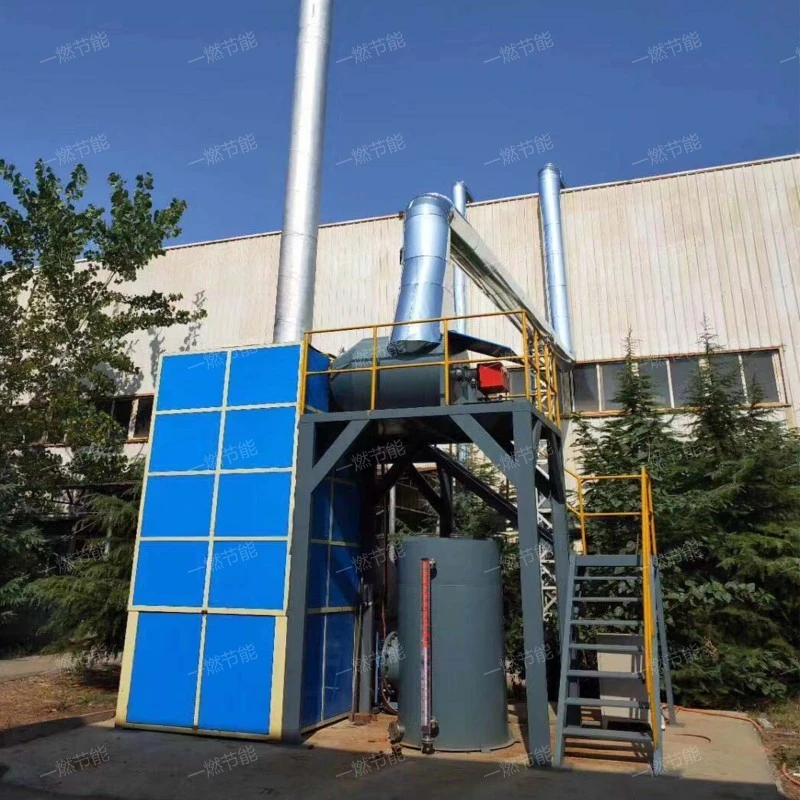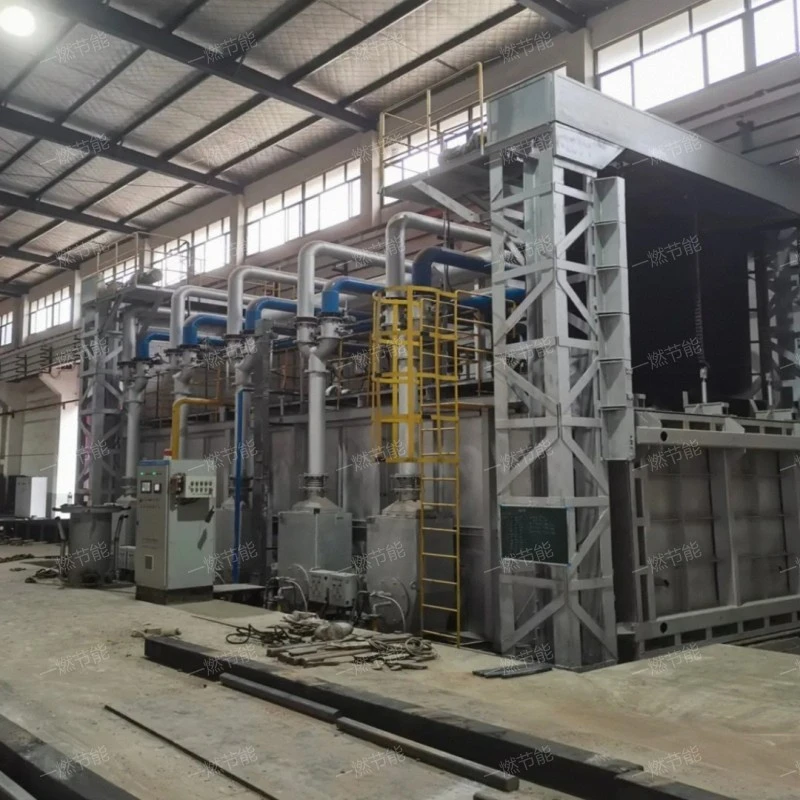What is a SCR low-temperature catalytic absorption flue gas denitrification? Introduction to the Working Principle of SCR flue gas denitrification
SCR low-temperature catalytic absorption flue gas denitrificationthe full name is selective catalytic reduction technology, which is an advanced flue gas denitrification technology.,The by-products produced by the technology are mainly nitrogen and water vapor, which are harmless to the environment and will not cause secondary pollution. Compared with the traditional wet flue gas denitrification technology, the SCR low-temperature catalytic absorption flue gas denitrification technology does not need to use a lot of water resources and will not produce pollutants such as wastewater, which is more in line with the requirements of environmental protection and sustainable development.、Technology has been developed and applied for many years, and it is mature and stable. The SCR low-temperature catalytic absorption flue gas denitrification has high reliability and stability, and can maintain stable denitrification efficiency under various working conditions. In addition, the SCR low-temperature catalytic absorption flue gas denitrification technology has good adaptability and adjustability, and can be adjusted and optimized according to different flue gas components and emission requirements.、It is famous for its high-efficiency denitration ability, which can usually reach more than 90% denitration efficiency. This means that the SCR low-temperature catalytic absorption flue gas denitrification technology can significantly reduce the concentration of nitrogen oxides (NOx) in flue gas and make it meet strict environmental protection emission standards. This high-efficiency denitration ability is mainly due to the promotion of the catalyst, which makes the chemical reaction between reductant and NOx more rapid and thorough.、The initial investment of technology may be high, but in the long run, its economic feasibility is remarkable. The high-efficiency denitration ability of SCR low-temperature catalytic absorption flue gas denitrification technology can significantly reduce the environmental emission cost of enterprises and avoid fines and legal risks due to illegal emissions. In addition, SCR low-temperature catalytic absorption flue gas denitrification technology can also reduce operating costs and improve the economic benefits of enterprises by recycling heat energy.、The technology is suitable for many industries and processes, such as coal-fired power plants, iron and steel smelting, cement production and so on. These industries will produce a large number of NOx emissions in the production process, and the SCR low-temperature catalytic absorption flue gas denitrification technology can provide effective denitrification solutions for them. In addition, the gate technology can be adjusted and optimized according to different flue gas components and emission requirements to meet different denitration requirements.。
1、Brief introduction of SCR low-temperature catalytic absorption flue gas denitrification
SCR low-temperature catalytic absorption flue gas denitrificationit refers to the process of removing nitrogen oxides from flue gas to reduce environmental pollution. NOx is a pollutant harmful to the atmospheric environment, which has strong irritation and toxicity, and will lead to environmental problems such as acid rain and photochemical smog, and also endanger human health. The main principle of flue gas denitrification technology is to reduce NOx to nitrogen and water by adding appropriate reducing agent or catalyst in the combustion process or flue gas treatment system, so as to reduce NOx emission.,is a common SCR low-temperature catalytic absorption flue gas denitrification。

SCR low-temperature catalytic absorption flue gas denitrification
2、Introduction of SCR low-temperature catalytic absorption flue gas denitrification characteristics
SCR low-temperature catalytic absorption flue gas denitrification has the following characteristics
- High denitration efficiency
- selectivity
- high efficiency
- High denitration efficiency
- high efficiency
The denitration efficiency of SCR low-temperature catalytic absorption flue gas denitrification technology can reach more than 90%, and it is a widely used post-combustion denitration technology at present.
Under the action of catalyst, the reducing agent mainly reacts with NOx selectively, but less with other components (such as oxygen) in flue gas, thus reducing unnecessary consumption.
Gate technology can effectively remove NOx from flue gas, and the denitrification efficiency can usually reach more than 90%.
The denitration efficiency of SCR low-temperature catalytic absorption flue gas denitrification technology can reach more than 90%, and it is a widely used post-combustion denitration technology at present.
Gate technology can effectively remove NOx from flue gas, and the denitrification efficiency can usually reach more than 90%.

SCR low-temperature catalytic absorption flue gas denitrification
3、On-site real shot of SCR low-temperature catalytic absorption flue gas denitrification
One-combustion energy saving SCR low-temperature catalytic absorption flue gas denitrificationthe product looks beautiful., the following is a panoramic shot of the SCR low-temperature catalytic absorption flue gas denitrification for your reference.。

SCR low-temperature catalytic absorption flue gas denitrification
Note: All the pictures in this article were taken by One-combustion energy saving manufacturer.。
4、SCR low-temperature catalytic absorption flue gas denitrification structure composition
The SCR low-temperature catalytic absorption flue gas denitrification has the following structure
- Reactor
- control system
- Catalytic reduction reaction
- Reducing agent supply
- Reducing agent storage and supply system
It is the core component of SCR low-temperature catalytic absorption flue gas denitrification technology, and it is equipped with catalyst to promote the chemical reaction between reductant and NOx.
The whole SCR low-temperature catalytic absorption flue gas denitrification is automatically controlled to ensure the stable operation of the system and achieve the expected denitration effect.
Under the action of catalyst, the reductant and NOx in flue gas undergo selective catalytic reduction reaction to generate nitrogen and water vapor.
Reducing agents such as liquid pure ammonia or ammonia water (aqueous solution of ammonia) are evaporated and mixed with diluted air or flue gas.
Used to store and supply reducing agent (such as ammonia or urea solution) to the reactor.

SCR low-temperature catalytic absorption flue gas denitrification
5、SCR low-temperature catalytic absorption flue gas denitrification application
SCR low-temperature catalytic absorption flue gas denitrificationIt has a wide range of uses, including Meet the requirements of environmental protection, environmental protection, Flue gas denitrification, environmental protection and Meet the requirements of environmental protection,is a popular SCR low-temperature catalytic absorption flue gas denitrification,the product looks beautiful.。

SCR low-temperature catalytic absorption flue gas denitrification
6、One-combustion energy saving's strength
The company has many years of SCR low-temperature catalytic absorption flue gas denitrification manufacturing experience, large scale and strong strength.。

One-combustion energy saving
SCR low-temperature catalytic absorption flue gas denitrificationthe product looks atmospheric.,at work,Ammonia gas or other suitable reducing agent (such as urea aqueous solution) is sprayed into the flue gas upstream of the catalyst at high temperature. Under the action of catalyst, the reducing agent selectively reacts with nitrogen oxides (NOx) in flue gas to generate pollution-free nitrogen and water vapor. Because NH3 is selective, it only reacts with NOx and basically does not react with O2, so this technology is called selective catalytic reduction denitrification.。
Related recommendation
-

台车调质炉
2023-05-01 -

What is a Chain track aluminum rod heating furnace? Introduction to the Working Principle of Forging furnace
2025-5-27 -

Introduction to Continuous bright heat treatment furnace and heating furnace structure principle
2025-5-27 -

Introduction to Intelligent natural gas trolley furnace, introduction to heating furnace advantages and characteristics
2025-5-27 -

Introduction to Denitrification equipment for strip steel heating furnace and SCR denitration structure principle
2025-5-27 -

What is a Anchor chain quenching furnace? Introduction to the advantages and characteristics of the Forging furnace
2025-5-27 -

Introduction to Carbon fiber trolley heating furnace, heating furnace advantages, characteristics and principles
2025-5-27 -

Introduction to Energy saving tube annealing furnace, advantages, characteristics and principles of Forging furnace
2025-5-27 -

What is a Industrial tempering resistance heating furnace? Introduction to the advantages and characteristics of Trolley resistance furnace functions
2025-5-27 -

Introduction to Full fiber trolley electric furnace and Trolley electric furnace advantages and features
2025-5-27




